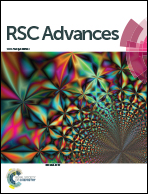Synthesis of porous carbon material based on biomass derived from hibiscus sabdariffa fruits as active electrodes for high-performance symmetric supercapacitors
Abstract
Carbon-based materials are manufactured as high-performance electrodes using biomass waste in the renewable energy storage field. Herein, four types of hierarchical porous activated carbon using hibiscus sabdariffa fruits (HBFs) as a low-cost biomass precursor are synthesized through carbonization and activation. NH4Cl is used as a chemical blowing agent to form carbon nanosheets, which are the first types of hibiscus sabdariffa fruit-based carbon (HBFC-1) sample, and KOH also forms a significant bond in the activation process. The prepared HBFC-1 is chosen to manufacture the symmetric supercapacitor due to its rough surface and high surface area (1720.46 m2 g−1), making it show a high specific capacity of 194.50 F g−1 at a current density of 0.5 A g−1 in a three-electrode system. Moreover, the HBFC-1 based symmetric supercapacitor devices display a high energy density of 13.10 W h kg−1 at a power density of 225.00 W kg−1, and a high specific capacity of 29 F g−1 at 0.5 A g−1. Additionally, excellent cycle life is observed (about 96% of capacitance retained after 5000 cycles). Therefore, biomass waste, especially hibiscus sabdariffa fruit based porous carbon, can be used as the electrode for high-performance supercapacitor devices.



 Please wait while we load your content...
Please wait while we load your content...